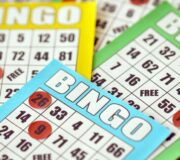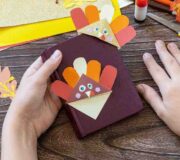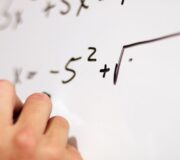7th Grade Math Games: Fun, Free Math Activities For Your Grade 7 Students (No Screens Required!)
7th grade math games are a good way to ease students into new math concepts or to provide some low stakes practice of new math skills. As middle school math lessons become more demanding for students, introducing fun math games can be a good way to vary classwork.
7th graders should be increasingly fluent in making meaningful connections between different mathematical concepts and be able to apply them readily. Children should understand and solve a variety of algebraic equations, understanding how to manipulate expressions and equations fluently. The games in this section will enable children to practice the skills learnt both in seventh grade and earlier.
Math Games For 7th Grade
13 fun math games and activities for your 7th grade students to complete independently or with a partner.
Download Free Now!When to use 7th grade math games
Fun math activities and math games provide students with an engaging, low-stakes opportunity to practice new math skills and solidify the skills they’ve already learnt. Seventh graders can often lose focus in class and become distracted, rather than assigning math worksheets, math games help to bring variety into the classroom and keep students’ attention.
For teachers, watching your students play a math game can also help you to assess their understanding of a new concept without having to hold a quiz.
See also:
- 3rd grade math games
- 4th grade math games
- 5th grade math games
- 6th grade math games
- 8th grade math games
How to use these 7th grade math games
We hope that the 7th grade math games below will provide some inspiration for games to play in your math classroom. All of the games below are simple to explain and require little resources, they can easily be adapted to different topics and can be altered to increase or decrease difficulty, they can even be applied to high school math topics.
We hope that these 7th grade math games will provide some valuable math practice in a fun new way!
Algebraic equations game: find the operation
This game is perfect for students in pre algebra and is a fun way to get children to practice working with algebraic equations.
What you will need to play:
- 2 players
- 0-5 grids (see printable resource pack)
- Pen
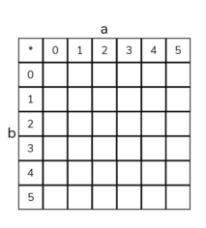
How to play:
- Both players have a 0-5 grid, marked ‘a’ and ‘b’.
- Each player needs to decide on the rule for their grid. For example, a * b means treble a, then add b.
- Once they have decided on a rule for their grid, they complete 7 answers.
- Players then swap grids and attempt to work out the other player’s rule, then complete the grid.
- The winner is the first player to correctly complete the grid.
Factors and multiples game
This board game encourages children to focus on both factors and multiples, and gives children a valuable chance to practice their multiplication tables.
What you need to play:
- 2 players
- A hundred square (see printable resource pack)
- 2 pens (different colors)
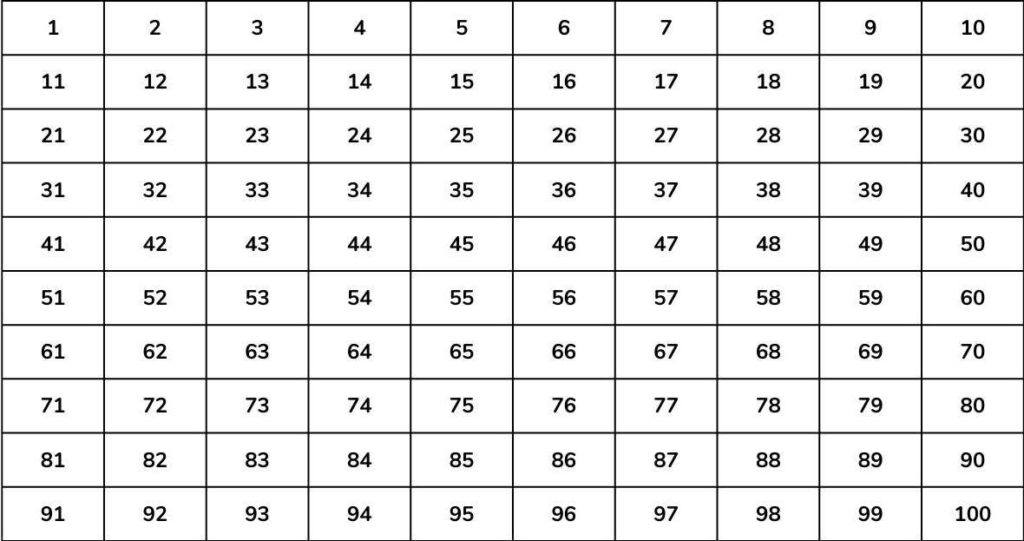
How to play:
- The first player chooses a number on the hundred square and crosses it out.
- The next player chooses a second number to cross out in a different color. This number must be a factor or multiple of the first number.
- Continue crossing out numbers, ensuring that each number crossed out is a factor or multiple of the previous number that has just been crossed out.
- The first person who is unable to cross out a number loses and the other player earns one point.
- The winner is the first player to use their multiplication tables to get to five points.
Number game: yes / no
A game that can be used to get children to identify the basic properties of individual numbers (e.g. square number, multiple, factor). The child guessing has to prioritize which questions are going to enable them to get closer to the correct answer.
What you need to play:
- At least two players
- Pen and paper
- Scorecard to keep track of player scores each go
How to play:
- Each player writes down a set of different values (e.g. 5 numbers) for the other player(s) to guess.
- Player 1 asks a question about the other player’s number (e.g. is your number a multiple of 5?).
- If the answer is ‘yes’, player 1 gets to ask another question.
- If the answer is ‘no’, player 2 gets to ask a question.
- The winner is the first player to correctly guess the other player’s number. They score one point.
- The first player to get to five points wins the game.
Division and remainders game: mystery number
In this word problem game, children use a range of clues involving division and remainders to work out the mystery number.
What you need to play:
- 2 or more players
- Pen and paper
How to play:
- Both players think of a number between 1 and 100 for the other player to guess.
- Player 1 gives a number between 2 and 10.
- Player 2 works out what the remainder would be if their mystery number was divided by that number.
- For example, player 2 may have chosen 44. If player 1 chose a 3 as their first number, then player 2 tells them what the remainder would be if their number was divided by 3. In this case, it would be a remainder of 2.
- Players jot down this information, to help them work out the number once all the clues have been used.
- Roles then swap and player 2 gives player one a number. Player 1 works out what the remainder would be if their number was divided by the number given by player 2.
- This continues. The winner is the first player to correctly identify the number.
Addition game: got it
This is a great strategy game and with no set up required, it’s easy to play at any time. It involves adding, but players need to think carefully about the strategy they use and whether they are able to find a winning strategy.
What you need to play:
- 2 players
How to play:
- The target number for the game is 23.
- The first player chooses a number from 1 to 4.
- Players take turns to add a whole number from 1 to 4 to the running total.
- The player who lands on 23 wins the game.
- Players need to think about their strategy and plan ahead.
2D shapes game: square it
This is another good strategy game, not only requiring players to think about their own game but also that of the other player’s.
What you need to play:
- 2 players
- Square dot paper
- 2 coloured pens
How to play:
- The first player places a coloured dot on one of the dots on the squared paper.
- The second player does the same, using a different color pen.
- This continues until one of the players has placed 4 dots which can be joined together to form a square.
- The square can be any size on the grid and can also be tilted.
- The game requires both players to be working out their own strategy, whilst also keeping a close eye on the other player’s game, to ensure any potential squares are blocked.
3D shapes game: nine colors
This is a fun game and challenging activity, similar to playing with a Rubik’s cube.
What you need to play:
- One or more players
- 27 cubes (3 each of 9 colors) per person
How to play:
- This game can be played individually, or as a speed challenge against other players.
- Each player needs to make a large cube using the 27 small cubes.
- The aim of the game is to be the quickest player to make a large cube with all 9 cubes on each face containing only 1 of each cube color.
- If any face contains more than one of the same color cube, the player hasn’t successfully completed the challenge.
Integer Face-off
This math game can help students practice adding or subtracting integers during some friendly competition with a classmate. This can be made more challenging by including dividing integers and negative integers.
What you need to play:
- A partner
- Two sets of cards labeled from -20 to 20, including zero. (Tip: cut index cards in half)
How to play:
- Each player gets one set of cards (-20 through 20). The cards should be shuffled and placed face down in a stack.
- At the same time, each player lays two of their cards face up and adds the two numbers together
- The player with the highest sum collects all four cards
- When a player runs out of cards in their stack, they should shuffle their collected cards and continue playing
- The game ends when one player runs out of cards. (Or whoever collects the most cards, wins!)
- Note: This game can also be played to practice subtracting integers. Instead of adding their two integers together, players would subtract.
Exponent Game
This math game is similar to the card game “War,” but students use their cards to create and calculate exponents.
What you need to play:
- A partner (or a small group)
- A deck of playing cards (Number cards only; Ace can be used as 1)
How to play:
- The cards should be shuffled and dealt evenly among the players
- Players should keep their stack of cards face down
- Each player flips two cards at the same time. The first card they flip is their base number and the second card flipped is the exponent. So, for example, if player 1 flips a 2 and then a 3, their number will be 23 which equals 8. If their opponent flips a 4 and then a 2, their number will be 42 which equals 16. So player 2 wins that round.
- The player who wins each round collects all cards played during that round
- Whoever collects the most cards, wins!
Proportion Hunting
This activity will get students thinking about proportions in the real world.
What you need to play:
- Paper
- Pencil
- Crayons or colored pencils (optional)
How to play:
- On a blank piece of paper, students write “Proportions are all around us” in the middle.
- On the rest of the paper, students should list real-world examples of fractions, decimals, and percentages. (Such as cutting a cake.)
- To take this a step further, this could be a creative art project done on a poster and students can illustrate each example.
M&M Math
This activity allows students to practice fractions, decimals, and percentages with M&Ms!
What you need to play:
- Paper
- Pencil
- Multi-colored M&Ms (at least 20 per student)
How to play:
- Provide each student with a pile of multi-colored M&Ms
- Students count the total as well as each color of their set of M&Ms
- Then, students create fractions, decimals, and percentages that represent their group of M&Ms.
- This activity can be extended by asking students to graph their data.
Mystery Number: Inequalities
This math game can be played whole-class, in small groups, or with partners and will help support students’ understanding of inequalities.
What you need to play:
- Paper, dry erase or chalkboard
How to play:
- One student or group starts by thinking of a mystery number. On their paper or on the board, they will write “x = ?” to represent their mystery number. (Before starting, there should be agreed-upon terms to the numbers that can be chosen as the mystery number, such as numbers 1-100.)
- The rest of the class or group will try to figure out the mystery number by asking questions pertaining to inequalities, such as “is the mystery number greater than or equal to 78?” If the answer is yes, the student would write “x > 78” on their paper or on the board. If no, they move on to the next question.
- The round continues until someone has correctly determined the mystery number. Then, another student or group chooses a mystery number and begins another round.
Make 24
This math game encourages students to use problem-solving skills as well as their knowledge of the order of operations. They can use basic calculations to reach the target number or they can utilize more complex equations.
What you will need to play:
- 2 or more players
- A pack of cards – number cards only (Variation: number cards = face value, A=1, J=11, Q=12, K=13)
How to play:
- Shuffle the pack of cards and lay them face down on the table.
- Each player picks a card and turns it face up on the table until there are 4 cards displayed per player.
- The aim of the game is to make ‘24’ using only the cards on the table and any of the 4 operations.
- For example, if they have a 6, 10, 2, and 6, the solution could be very simple, such as basic addition: 6 + 10 + 2 + 6 = 24
- To incorporate the order of operations, however, students can create more complex operations involving parentheses. For example, they may have 9, 5, 6, and 9 and solve it by creating the equation 5 – (9 ÷ 9) x 6 = 24.
- Teachers may add rules or variations to the game to encourage more complex equations being created, such as
- 2 or more operations must be used (or 3, or all 4),
- must use at least one set of parentheses,
- each player must create 2 different equations, etc.
- If no players are able to reach 24, the player who is the closest wins.
Hopefully, this blog has given you some ideas for games you could play in your classroom. Most are easy to adapt, to suit any age or the topic you are covering. Don’t just adapt the games yourself; give children the opportunity to adapt and think up their own rules too.
READ MORE:
Do you have students who need extra support in math?
Give your students more opportunities to consolidate learning and practice skills through personalized math tutoring with their own dedicated online math tutor.
Each student receives differentiated instruction designed to close their individual learning gaps, and scaffolded learning ensures every student learns at the right pace. Lessons are aligned with your state’s standards and assessments, plus you’ll receive regular reports every step of the way.
Personalized one-on-one math tutoring programs are available for:
– 2nd grade tutoring
– 3rd grade tutoring
– 4th grade tutoring
– 5th grade tutoring
– 6th grade tutoring
– 7th grade tutoring
– 8th grade tutoring
Why not learn more about how it works?
The content in this article was originally written by content team Vanessa Sipple-Asher and has since been revised and adapted for US schools by elementary math teacher Katie Keeton.

